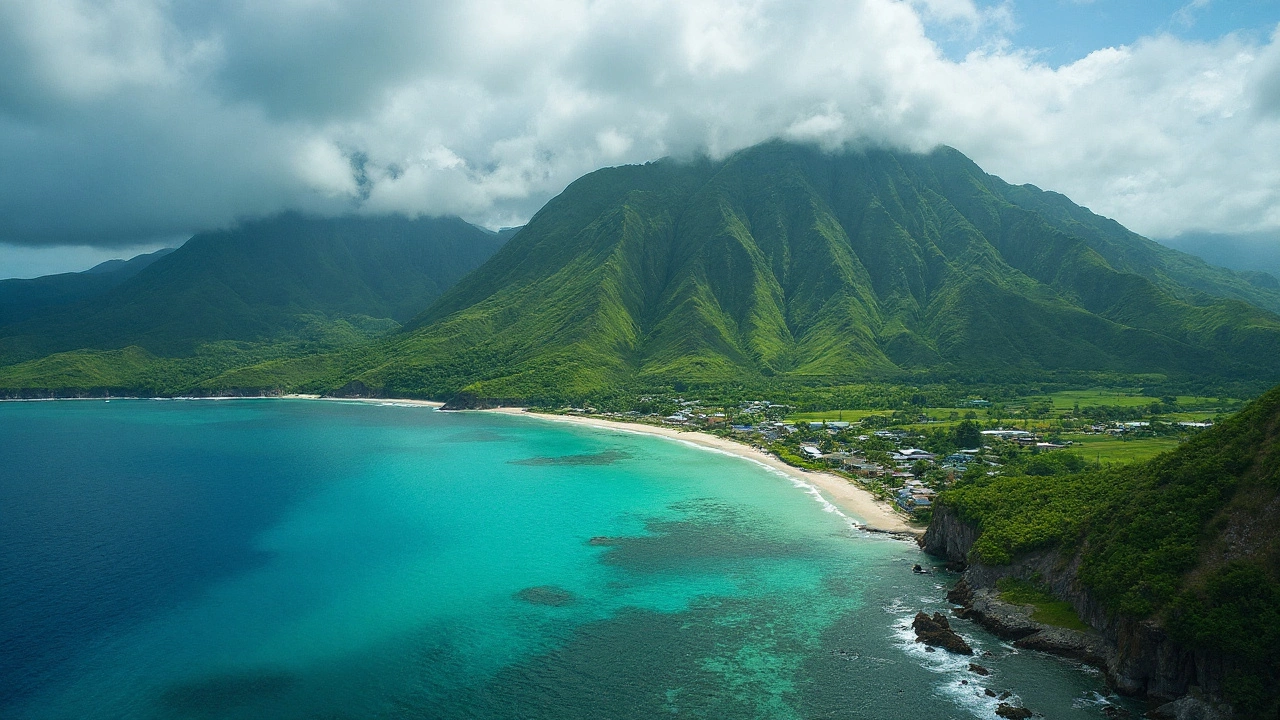National Park of American Samoa is one of the few U.S. parks far from the mainland. It spreads across three islands — Tutuila, Ofu, and Taʻū — protecting tropical rainforests, coral reefs, and coastal villages. If you want wild South Pacific scenery without big crowds, this is the place.
The park was created to protect unique island ecosystems and Samoan cultural sites. You’ll see dense forest, cliffs, and vibrant reef flats. Marine life and bird species here differ from anything on continental U.S. parks, so bring curiosity and a camera with a good zoom.
The main gateway is Pago Pago on Tutuila. Flights come from Pago Pago International Airport, usually via Apia (Samoa) or Honolulu. Boats connect the islands but schedules can change, so book ahead. Many visitors stay on Tutuila and take day trips to Ofu or Taʻū when possible.
Best months are the dry season — lower rain means better hiking and snorkeling. Even in wetter months, the islands stay warm. Weather can change fast: plan flexible travel and expect occasional delays.
Snorkeling at Ofu Beach is famous for shallow coral gardens right off the sand. If you like easy water access and colorful reefs, that’s your spot. On Tutuila, short hikes like Mount Alava offer panoramic views of Pago Pago Harbor. Taʻū has quieter trails and dramatic cliffs.
Packing list: reef-safe sunscreen, sturdy shoes, mosquito repellent, reusable water bottle, quick-dry clothes, and a light rain jacket. There are few facilities in the park; bring snacks and basic first-aid. Respect local villages: ask before entering and follow any posted rules.
Safety note: ocean conditions can be rough. Swim only where locals indicate it’s safe and avoid solo snorkels in strong surf. Some trails are steep and muddy after rain — go prepared and take your time.
Conservation matters here. The park works with local communities to protect reefs and forest habitats. If you visit, avoid touching coral, don’t feed wildlife, and use reef-safe products. Small actions help preserve these fragile ecosystems.
Where to stay: Pago Pago has guesthouses and small hotels. On Ofu and Taʻū you’ll find limited guesthouse options and community-run stays — book early. Staying local supports the islands and gives a closer view of daily life.
Questions before you go? Check current boat and flight schedules, ask about village etiquette, and confirm available services. This park rewards visitors who plan a bit ahead: you’ll find rare wildlife, empty beaches, and genuine Samoan hospitality.
Want a quieter, off-the-grid national park experience? National Park of American Samoa delivers striking nature and culture — just come prepared and give the islands the respect they deserve.

Far from mass tourism, American Samoa blends wild rainforests, world-class reefs, and a living Polynesian culture. Explore the National Park, tranquil Ofu Beach, and Pago Pago’s deep harbor, then dive Fagatele Bay and join village life guided by Fa’a Samoa. Here’s what to see, when to go, and how to move around this remote U.S. territory without crowds.